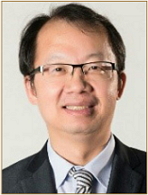Are Surgically Remediable Headaches Associated With Cervical Spondylosis Equivalent to “Cervicogenic Headaches”?
Article information

Cervicogenic headaches refer to headache caused by a disorder of the cervical spine and its component bony, disc, and/or soft tissue elements, with or without accompanying neck pain [1]. The clinical presentation of cervicogenic headache is heterogeneous. Unilaterality, provocation by neck movement, unphysiological posture, or external pressure applied to the cervical region, and limitation of neck movement have been considered important clinical clues for diagnosis [2]. However, none of these features seem to be pathognomonic. The single-blinded anesthetic blockade has been proposed critical for diagnosis; yet, it was rarely applied in either clinical practice or researches.
In the current issue of Neurospine, Thind et al. [3] reported a post hoc analysis for a multicenter randomized clinical trial in 575 patients who underwent 1 or 2-level anterior cervical spine surgery for symptomatic cervical spondylosis. The study found that 1 or 2-level anterior cervical spine surgery, including cervical disc arthroplasty and anterior cervical discectomy and fusion, provided long-term remission of headaches 7 years after surgery. The headache was evaluated with a single parameter—the headache score of the Neck Disability Index (NDI). The average improvement of the NDI headache score was around 1 point, and roughly 20%–30% of the patients with frequent moderate headache improved to infrequent mild or moderate headache. The authors also proposed that sinuvertebral nerve irritation at the uncovasculoradicular junction and anterior dura may be the cause of cervicogenic headache, and cervical kinematics might explain headaches associated with lower cervical spine pathology. This study provided a clinical implication that anterior spinal surgery may be helpful for headaches associated with cervical spondylosis in the long run; however, it also raised important concerns that need to be addressed in future studies.
First, there have been multiple randomized controlled trials conducted for cervicogenic headaches; however, the criteria used to diagnose these headaches are heterogeneous and mostly obsolete [2]. In the current study, the diagnosis of cervicogenic headache was not based on any pre-existing criteria. It is uncertain how many percent of the patients’ headaches could fulfill the diagnosis of the most up-to-date criteria—the International Classification of Headache Disorders, third edition (ICHD-3) “code 11.2.1 cervicogenic headache” (Table 1). As primary headaches such as migraine or tension-type headache are frequently associated with neck pain and could be triggered by prolonged unphysiological neck position, it would be difficult to differentiate whether these patients could have these primary headaches on top of symptomatic cervical spondylosis or truly have cervicogenic headache based on a single headache score but not a systemic criteria-based approach. Second, even though the headaches have improved after the surgery, the causation between headaches and surgery could not be completely ascertained (which is required by the ICHD-3 criteria). For example, primary headaches could improve by themselves as a result of natural disease course (e.g., regression to the mean) but not as a consequence of surgery. If a prior diagnostic blockade could abolish the headache, then it would be more confident of claiming the causation when the headaches also improve in close temporal relationship with the surgery. Moreover, a double-blind placebo-controlled design should be considered. Third, functional convergence of the upper cervical and trigeminal sensory pathways explains the possible pathophysiology of cervicogenic headache; however, that pathogenesis of the headaches associated with lower cervical pathologies remains unclear. The authors proposed a plausible theory to explain the possible link between headache and lower cervical spondylosis. However, this theory was based purely on hypothetical assumptions rather than derived from the results of the study itself. This is also a common flaw of the currently available trials for cervicogenic headache. Unless the study is specifically designed to address the question, the pathophysiological insights gained from the trials were limited.

The International Classification of Headache Disorders, third edition (ICHD-3) diagnostic criteria for cervicogenic headache (code 11.2.1)
To conclude, surgically remediable headaches associated with cervical spondylosis could be “cervicogenic headaches”; however, a rigorous presurgical approach based on diagnostic criteria, especially ICHD-3, is needed. The already existent criteria might not be perfect. Still, they need to be field-tested to help better understanding the prevalence, clinical features, risk factors, treatment responsiveness, and even the pathophysiology for the headache associated with cervical spondylosis.
